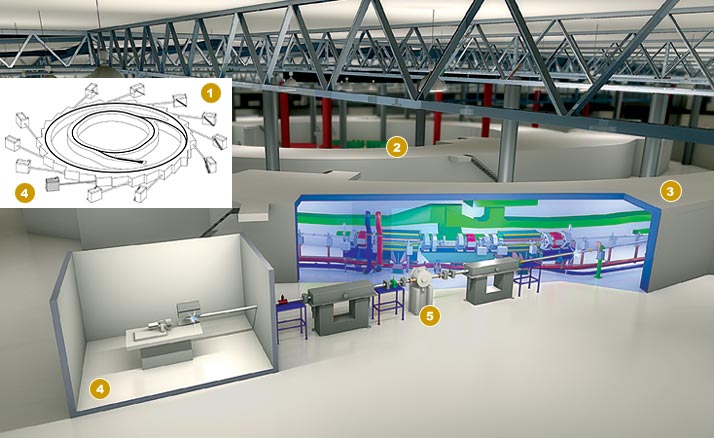Deconstruction: Australian Synchrotron
 |
The Australian Synchrotron fits into the larger Australian and international research programs. Newly established e-Research Centres will link to the AS as part of the national data grid, allowing for remote collaboration and operation of the facility. During its construction, managers of the AS have signed Memoranda of Understanding for cooperation and collaboration with other light source facilities, including the Photon Factory at KEK in Japan; SPring-8 at the Japan Synchrotron Radiation Research Institute; the Beijing Synchrotron at the Institute for High Energy Physics; the Advanced Photon Source at Argonne National Laboratory in Illinois, USA; the European Synchrotron Radiation Facility in Grenoble, France; the Swiss Light Source in Villigen, Switzerland, and others. |
| Text by David Harris Image courtesy of the Australian Synchrotron |
| 1 |
Through the 1990s many hundreds of Australian scientists traveled abroad each year to use overseas synchrotron facilities. The Premier of the State of Victoria, Steve Bracks, declared in 2001 that his state would fund the building and light source for a national synchrotron facility in Melbourne. A wide-ranging consortium of research organizations, universities, and state governments from Australia and New Zealand have committed to funding the initial beamlines for the synchrotron. |
| 2 |
The Australian Synchrotron (AS) was designed by Australian accelerator physicist John Boldeman, in collaboration with Germany's Dieter Einfeld, Berkeley's Alan Jackson, and with input from an international committee. In this design, electrons are first accelerated in a short linear accelerator before they go into an inner booster synchrotron that brings the electrons to the desired energy of 3 GeV (billion electronvolts). |
| 3 |
Once the electrons have achieved their final energy, they are transferred to the outer storage ring. In the outer ring, there are 12 straight sections that can contain wigglers and undulators, which make the electrons oscillate side-to-side rapidly, generating the X-rays that will be used for experiments. |
| 4 |
The design of each of the nine initial beamlines corresponds to particular types of experiments. Among its many applications, the light source will enable crop research, drug design, forensics, new material development, food technology research, and advanced manufacturing. Time on beamlines will be both purchased by industry and allocated to university researchers on the basis of a peer-reviewed proposal process. |
| 5 |
The AS is due to open for use by more than 1200 Australian scientists in 2007, meeting the date promised in 2001. There is capacity for more than 30 independent beamlines on which individual research projects can take place, each typically for a few days at a time. Among its priorities, the AS is aiming for world-leading direct and collaborative industry use. |
Click here to download the pdf version of this article.






